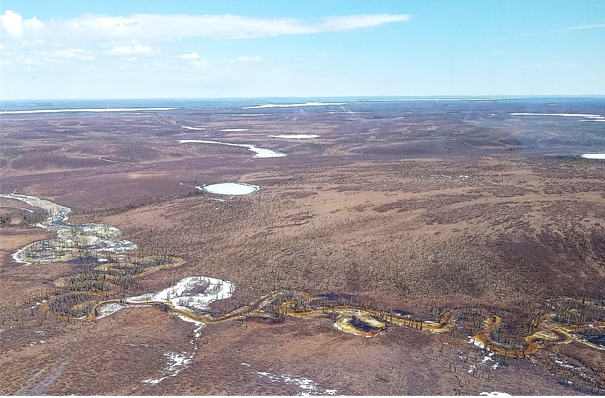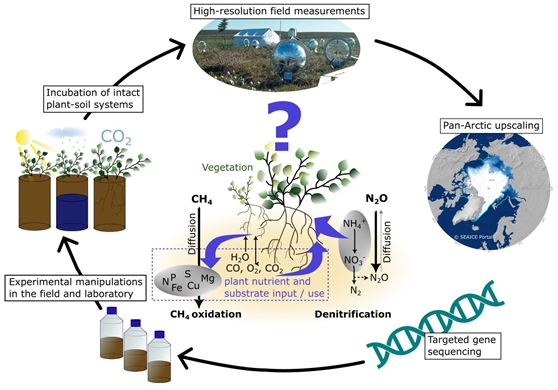Junior Research Group COLDSPOT
AWI-UHH joint research group COLDSPOT
Background
The release of greenhouse gases from the terrestrial biosphere is of global importance. The Arctic, known for its vast carbon and nitrogen reservoirs, is warming faster than the global average and regionally a significant source of greenhouse gases like carbon dioxide, methane, and nitrous oxide. In contrast, uptake of methane and nitrous oxide by Arctic soils, leading to greenhouse gas removal from the atmosphere could, at least partially, compensate for carbon and nitrogen losses redefining our baseline understanding of the Arctic’s role in the global climate systems. Yet, research disproportionately focuses on high-emitting ‘hotspot’ areas, overlooking the potential of Arctic soils to act as ‘coldspots’.

UHH/IfB/C. Voigt
Vision of our group
The ERC-funded COLDSPOT project addresses this research gap by investigating when, where and why Arctic soils act as sinks for methane and nitrous oxide. In a multi-scale approach, we combine field-based measurements of multiple gas species with simulation experiments in climate chambers in the laboratory, and investigations ranging from the microbial scale, via soil and plant processes to ecosystem-scale models. Our field sites are located in diverse Arctic ecosystems in Canada, Finland, and Greenland.

UHH/IfB/C. Voigt 2023, COLDSPOT research proposal
This five-year research project runs from 2025–2030 and is funded by the European Research Council (ERC Starting Grant COLDSPOT). The group is established as a bridge group between the Alfred-Wegener Institute Helmholtz Center for Polar and Marine Research (Permafrost Research Section), and the University of Hamburg.
Team
- Dr. Carolina Voigt (group leader)
- Dr. Friederike Neiske (Postdoc – visiting scientist, AWI Potsdam)
- Dr. Maren Jenrich (Scientific project and expedition manager, AWI Potsdam)
- Aimée Pellissier-Tanon (PhD student)
